John Romero made a few maps for the original Doom back in 2016. He had withdrawn from idtech1 level design following the publication of The Ultimate Doom and Thy Flesh Consumed. Tech Gone Bad and Phobos Mission Control saw a broad range of reactions from the community, none of which surprised me. What did was the announcement of Sigil at the end of 2018 in celebration of Doom's 25th anniversary. John made an entire episode of maps and while it was going to be released for free he was also including it along with some physical goods. These took the form of a regular-sized box and funsies as well as the larger and more expensive Beast Box. The material stuff saw some production issues that ultimately delayed the publication of the free download but the package is on /idgames as of 05/31/19. The finished product replaces Inferno for source ports that don't support MAPINFO and the like (SIGIL_COMPAT) but it otherwise makes its own room, slotting in as a fifth episode. It won't play in pure vanilla but it ought to work in just about everything else, including the HEX-hacked "Doom+" executable.
Romero's own take on E4 had Doomguy sent to another corner of Hell in a desperate attempt to prevent him from reaching Earth. His own campaign is inserted between the second Spiderdemon's portal and the player's bittersweet celebration over avenging the death of Daisy. As it turns out, Baphomet weaved its dark sigil into the exit portal thus shunting you off to an even darker region of the infinite abyss. The demons are only delaying the inevitable but if you take too long to kick ass in Hell then there may not be much of a world to save when you finally break through.
I was stoked to play this as a showcase of John's creative force as featured over a whole episode as opposed to the one-offs of E1M8B and E1M4B. Not to dig on the possibility of more free onesies but the KDitD replacements didn't have any thematic cohesion beyond their shareware trappings. Sigil is a completely different beast though the thin, cherry-red cracks of infernal energy seen in Tech Gone Bad are one of the episode's major motifs. The other expected feature, given that this is sort of an escalation of E4 as done by Romero, is the ubiquitous presence of raised walkways. They aren't always over something as simple as a damage floor but you generally don't want to plunge into the down below.
The coolest trope that John brings to the table is his use of the evil eyes. The sigil-inscribed peepholes are used throughout the entirety of the set as shootable triggers. Sometimes they reveal secrets and at others they are key to progression. As a game designer, Romero takes great pains to ensure that you understand what they do. He crams a ton of them into "Baphomet's Demesne" (E5M1) and makes them essential to reaching the exit. There's no way to move out of the opening room without activating one... though I can imagine that the first instance could blow past you if you're just flailing about and shooting wildly. I would learn to look out for them as soon as possible, particularly if you have any aspirations toward reaching the secret level.
SIGIL is designed with much tighter monster counts when compared to the sprawling epics of "modern" sets from community authors like, say, No End In Sight. In this way it's probably more representative of the average size of Thy Flesh Consumed's levels. If you were hoping for something to last you the length of a megaWAD then, well, tough! The longest map here is "Nightmare Underworld" (E5M7). At 150+ monsters it doesn't look immediately imposing to veterans but Romero does a great job of making it feel grander by the way in which he routes you through the Hellscape.
Not content to merely coast on making a bunch of rough, tough, and pretty maps, Romero has given each one a distinct identity. I've already mentioned "Baphomet's Demesne" and its army of evil eyes that build the pathway to the exit. "Sheol"'s (E5M2) main draw starts as something of an echo of "Perfect Hatred" but it's a kinder, gentler, and above all else tighter take. The gimmick of "Cages of the Damned" (E5M3) is in the title and is a memorable setpiece given how you're routed around them. John splits the precarious passage in three for "Paths of Wretchedness" (E5M4). Catwalks partially dominate though the eastern section inverts the exercise by having a toxic channel run down the middle between two side-paths. It's also notable for an ornate crusher segment.
"Abaddon's Void" (E5M5) is sort of like a small sandbox city map. The big switch-up occurs on UV where it has a Cyberdemon on the west and east ends for area denial, countering a typically exploratory pace. Oppression and obscured enemies defines "Unspeakable Persecution" (E5M6). Dark lighting does the job for the first half while the second forces the player through the teased two-tier labyrinth. The UV-only Cretan rears its ugly head again, piling on the provocation. "Nightmare Underworld" is probably the most "normal" level for modern-leaning fans. It shines in how Romero leads the player through every inch of the Hellscape, even returning to previous areas in a sort of boss rush.
John closes things out with "Halls of Perdition" (E5M8) which starts out restricting player movement by way of midtexture cage walls and ends in a bit of three-dimensional platforming. The first half is the more unique aspect and also thematically ties the end to the beginning, using the cherry red cracks and pentagrams seen in the secret reaches of E5M1. "Realm of Iblis" feels like the weirdest level of the set, appropriate considering its E5M9 slot. The opening area with its paired crusher-based machinery and inexplicable substation has a DoomCute air of "Romero Does 1994". It also has the most frustrating Cyberdemon encounter of the set, depending on whether or not you missed the secret BFG in E5M6.`
Speaking of the cibberlords, Romero keeps up with the number 6 motif by including six of them. (I thought that he might have sneakily totalled the episode's enemies out to 666, but alas.) Four are only witnessed on UV and none are impossible to kill. In fact, half of them are handled by way of simple telefrags! I've read some criticism of the resource balance but the ammo disparity feels overstated. In my mind, of course, I'm comparing it to Crusades and its descendants like 2002: ADO's E4 which are way worse. It helps to be a crack shot with the pistol, though, and it wouldn't hurt to know where the secret weapons are. If Ultra-Violence feels too punishing then I strongly suggest giving the set a thorough once-over on HMP to learn where everything is and then engaging challenge mode for a much-deserved second playthrough.
The health feels tighter than the ammo does. Again, it has nothing on the grueling rationing of Richard Wiles and his disciples, but it could be an issue if you are stubbornly trying to play the whole thing through while carrying over your supplies. I once actually worked myself into a health deficit and decided to restart the whole level from scratch as opposed to spending the time to try to overcome it. This isn't a big deal if beginning with the pistol isn't a soul-crushing immersion killer but I know that there are plenty of players who would rather quit instead of deal with it. In my memory this episode is much easier to start than Thy Flesh Consumed's infamous one-two punch and doesn't quite hit E4M2's peak.
SIGIL has a tale of two soundtracks, one only available to spenders. Buckethead scored a new song specifically for the episode ("Romero One Mind Any Weapon") and the author composed all of the levels while listening to the specific tracks that now back them. I'd heard of the musician before and stumbled across John's account on Bandcamp a year or two ago. I was surprised to see the almost singular devotion to Bucketheadland's Pikes but knowing that removes the surprise from this association. The opening shred-off is deceptive as the rest of the music is perfectly atmospheric, beautiful, melodic, and forlorn. I became a fan over the course of the episode. All of this content is found in SIGIL_SHREDS.WAD which is only available within one of the two physical releases or via a digital purchase on Romero's site. You can also grab it from Buckethead's Bandcamp page in album form.
Doomworld Forum superstar Jimmy also managed to get a bit of a rub when folks realized that Sigil's free release would have no new music. John got in touch with the lad and thus the MIDI soundtrack was born. It took me awhile to track them down but none of the main songs featured here were written specifically for Sigil. Neither however did Jimmy create for now-familiar and over-exposed projects, owing to his "originals" and stuff that was crafted for abandoned developments. If you're looking for the second coming of Bobby Prince then you're going to be disappointed. This isn't because Jimmy's a bad composer. Quite the contrary, in fact. His compositions reflect the broader range of instrumentation used by the community musicians. They still run the gamut from pulse-pounding rock to sometimes unsettling atmospheric pieces.
SIGIL is ultimately the product of Romero's long career as a game designer. I've already mentioned the shootable eyes but its commitment to player entertainment is woven into just about every aspect of the episode. The relatively short levels make this a fast play while also limiting the amount of time where the user is exposed to situations that they may object to, e.g. whittling down a Baron with a shotgun. The tight design also allows each entry to maintain a distinct gameplay identity without the gimmick / theme overstaying its welcome. If the author had placed them within the context of longer, more varied maps as setpieces then they would contribute less to the final character.
SIGIL's standard citizens are delivered in a generally incidental manner as befits the original's relatively simple bestiary. You still run into situations like the cage-baffled catwalk of E5M3 or the occasional teleporter ambush but the player has an appreciable amount of room in which to breathe. The lower pressure has less of a stranglehold on your movement than the highly-polished style of setpiece encounters that arose in the wake of Erik Alm's action-oriented career. In the latter it sometimes feels as though you have to clear the killing floor before you can finally enjoy the landscape that you've been fighting in. The relatively low-key action of older Doom combat - as well as this episode - allows you to drink in both elements at the same time, not being bound by constantly processing monster information. In this way more practiced players may let their guard down.
The episode feels gameplay-focused, not necessarily in its combat but the way in which the player progresses through each level. The brief and generally linear layouts pare down the potentiality of players getting lost or failing to discern where to go. This is in contrast to the often larger, more exploratory affairs found within his original trilogy works. While they were never as sprawling as community offerings like No End In Sight's "Netherworld Citadel" they still gave players some room in a decently-sized hub area to stretch their legs. Most of the outright hostility toward the player seen in Doom II or The Ultimate's E4 is found in the complex E5M7, the three-path E5M4, and E5M5's duelling Cyberdemons. The latter being absent on the default difficulty, of course.
The playing areas themselves are distinctly Romero's. The author brought a lot of three-dimensional space in with his 1994-1995 output and SIGIL's numerous, elevated surfaces continue this trend. More importantly, their succinct size makes them feel like levels from the tightly designed game that we all imagine Doom to be. I mean, as opposed to the dungeon crawler-inspired hybrid which emphasized different elements depending on whether John, Tom, or Sandy was at the helm. Most of the similar material that stands out in my mind consists of some of the more successful speedmapping experiments. I feel that the size of user levels trends toward larger and more complex maps. This is a natural direction following the regular campaigns, an outgrowth of their sometimes labyrinthine stylings.
One aspect of "modern" level design expends effort polishing away spatial obstacles in order to maximize the amount of time during which the player focuses on killing monsters. Here, Romero has included - among other things - a large crusher engine that must be navigated by moving between tiny safe pockets. I like how much his environments figure in to the gameplay experience, particularly his use of three-dimensional space. I also appreciate how neatly the gimmicks are woven into the set. It isn't as all-encompassing as Ryathaen's Absolutely Killed but it's the closest that I can think of at the moment when it comes to OG Doom levels.
The crunchy layouts of SIGIL are satisfying to master but are less concerned in establishing a universe and better understood as literal islands of obstacles, cobbled together by Baphomet (John). The vast majority of Romero's world-building is thematic and leverages both the evil eyes and the infernal cracks that he debuted in Tech Gone Bad. The latter features in what appears to be the sole notable instance of giving the player something to see outside of the game space, E5M1's secret network of Satanic energies and pentagrams. The former feels as though Baphomet is nervously checking your progress. Shooting its eye results in its power waning, causing an obstruction to fall apart or your will to manifest a reward. Whichever you believe.
The third elemental consistency is found in the Baphomet seals at the end of each level and the starting areas that represent the opposite side, which are typically identical but for the wooden gate. These aren't much different than using the same textures to mark the exit and "entrance" doors but the sheer spectacle makes it. E5M5 offers the main exception to continuity by starting you on a little chunk of land. The "bookends" are in the same spirit as some Doom authors who link together mapsets by ending each level with the beginning of the next. The seals and eyes see John world-building through the imposed visual manifestations of gameplay mechanics.
One of the characteristics of Romero's E1 level design gave the player tantalizing glimpses into otherwise hidden areas, encouraging exploration and the hunt for secrets. This often brought you to the outdoor yards of Phobos or optional and sometimes vast annexes seen in "Nuclear Plant" and "Toxin Refinery". SIGIL has very little for you to find beyond what's immediately in front of you, though. While you may discover the occasional tiny, tucked-away cavern the flamboyant eyes have been used to streamline the secret-sniffing progress. This assists players who were never particularly good at reading the automap or looking for slightly different or misaligned textures. E5M1 and E5M7 provide exceptions in their secret chains. The latter also does something that I've never seen before by forcing the player to run into a lava-filled cave, triggering a lowering blockade, and then dart outside for lack of an enviro suit.
By restricting the visible universe to the playable one John erases another possibility for confusion. Some of the coolest visuals in PWADs involve painstaking environmental design in an inaccessible periphery but this clouds the issue of what can and cannot be explored. Romero has just about avoided the question entirely; the playing area is either surrounded by rock or infinite void. Whenever you can see the sky it is only at the top of some giant pothole or fissure such that every Baphomet-induced pitstop appears to occur in either a vacuum or vacuole. There is precious little to invoke the player's imagining a world beyond your current microcosm but the author is leveraging a different, action-oriented avenue of immersion.
What environment you're allowed to see looks pretty sweet. Some folks will continue to struggle with the cherry-red cracks and they appear numerous times, here. E5M6 has a great contrast of bright and dark going on and features one of the coolest setpieces, the labyrinth. The chunky rock wall of E5M3 feels uninspired since it's clearly built off of a right angle but the dressing looks great just about everywhere else. John even manages to find his own aesthetic by using the spine texture to break up the cliff walls in E5M7; it's such a smart look. Another one of my favorite setpieces is the crumbling low road / fenced-off high road in E5M4's eastern pathway. E5M2 is probably the tightest level in the set between its light / shadow aspect, feeling like a gentler player-friendly rewrite of E4M2, and having one of my favorite music tracks of the episode.
The community has spent a significant portion of its time idolizing The Ultimate Doom with mapsets that go through great pains to rearrange the very base elements into brand new configurations. The pursuit of the elusive id-like feel seems Quixotic at times since it means so many different things to an even broader variety of people. Much of this nebulous ideal is built upon the trilogy's position as the twenty-five year-old foundation of its resulting modifications. On the one hand it would seem as though Romero was uniquely poised to deliver a fifth episode of Doom, retreading the themes and architecture of his established "canon". On the other, Tech Gone Bad came more than twenty years after his last-released Doom map. I can't imagine that John could just slot right back in to a mindset which was produced by his state of being a quarter of a century ago.
When Romero started making maps again, some of the more vocal community members criticized his return in reaction to the unbridled enthusiasm with which he was met. He had had a hand in kickstarting the modding scene but then moved on in his career while hobbyists made more tools and took the game to new and sometimes strange places. When the prodigal son returned it was as an outsider who wasn't excruciatingly familiar with the current level design paradigms. Trying to measure up to the impressive body of work that the community has produced is daunting. He ultimately chose a different, more natural path and it reflects the direction of his life over the years.
John may have made his single greatest impact as part of the Doom team but Wikipedia credits him as contributing to sixty-seven other games before it, starting as far back as 1982. His long history as a developer coupled with an inexperience in community mantras made him better situated to deliver something fresh. Romero decided to emulate a new gameplay "mechanic" and pushed it hard. This is nice to see as I've heard others suggest that when the engine cannot do something well then it is better to not try it at all. I also appreciate just how much SIGIL holds back compared to past Ultimate Doom mapsets. The episode should appeal to players who feel as though absolute difficulty in the community has escalated be it in combat or larger, intricate level layouts.
SIGIL's signature is unmistakably Romero's, due not just to the preponderance of catwalks marking his 1994-1995 work but also the authorial indulgences which characterize the set as a whole. I really feel as though John built an episode that was cool to him rather than chasing some sort of Platonic ideal of what a Doom level ought to look or play like. If he ever decides to indulge in the hinted at sequel then I'll be there again to see what he comes up with next.


SIGIL
by John Romero
6 6 6 IS NO LONGER ALONE
HE'S GETTING OUT THE MARROW IN YOUR BACKBONE
AND THE SEVEN WEAPONS BLOWING SWEET ROCK AND ROLL
GONNA BLOW RIGHT DOWN INSIDE YOUR SOUL
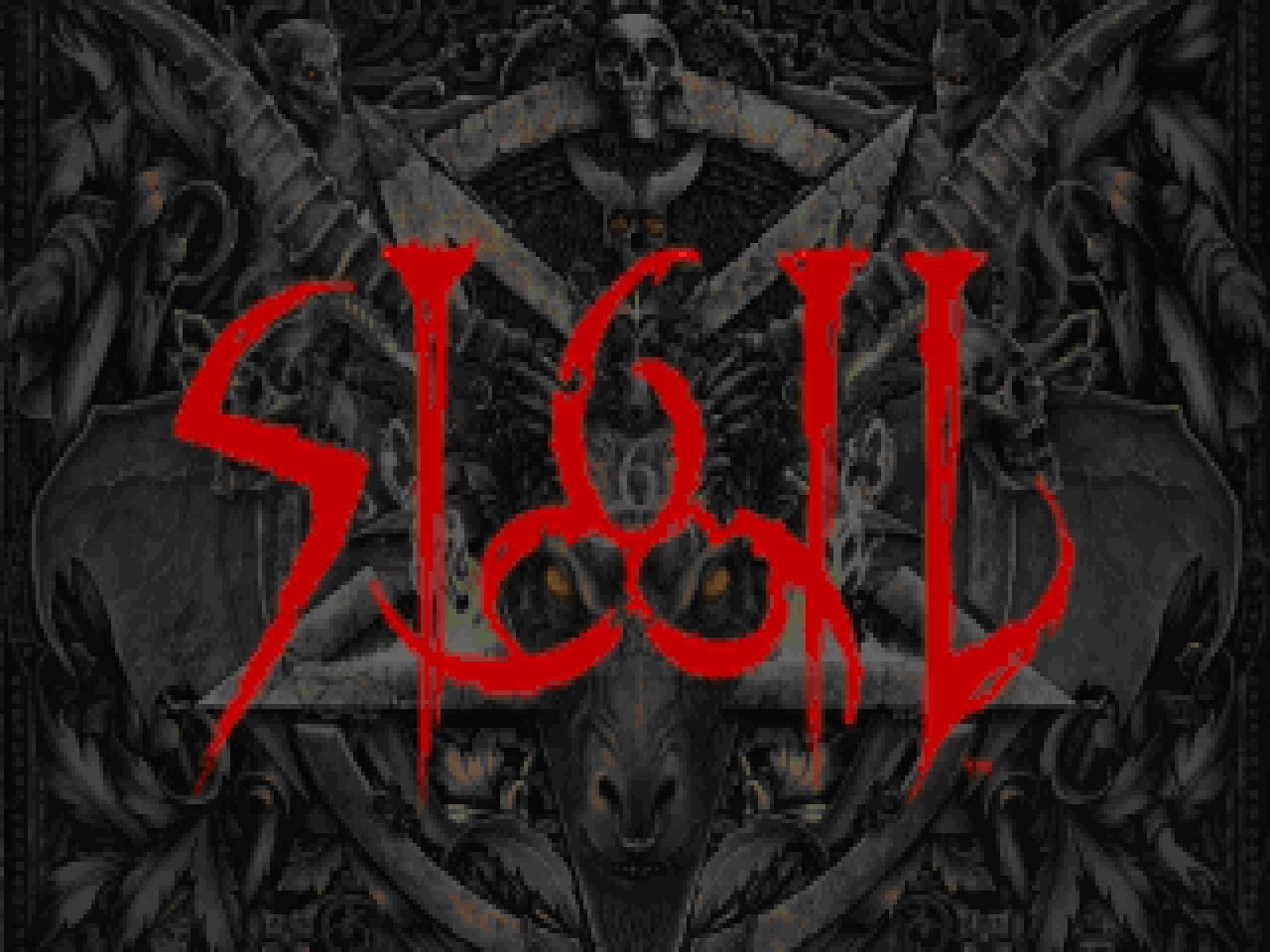
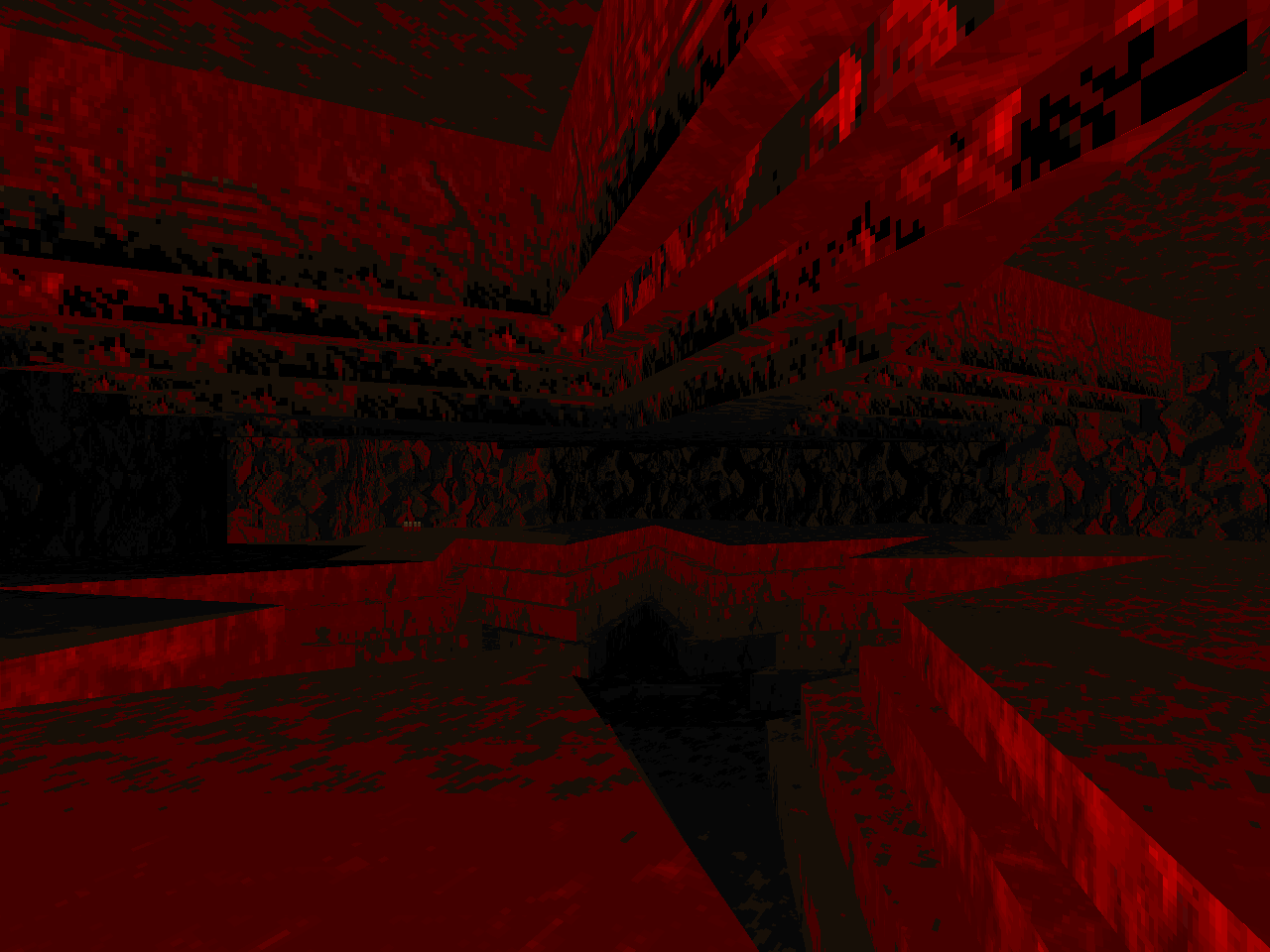
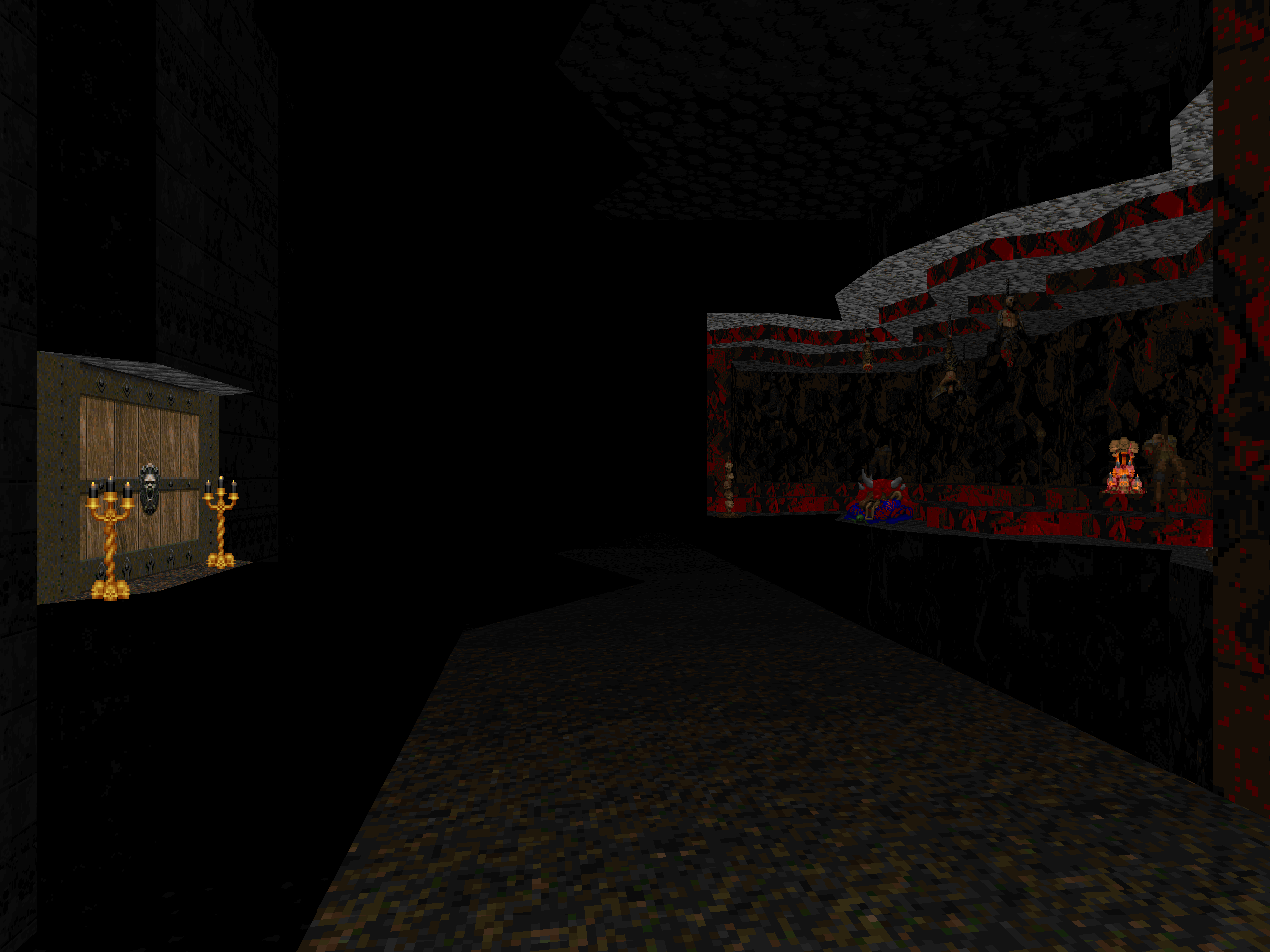
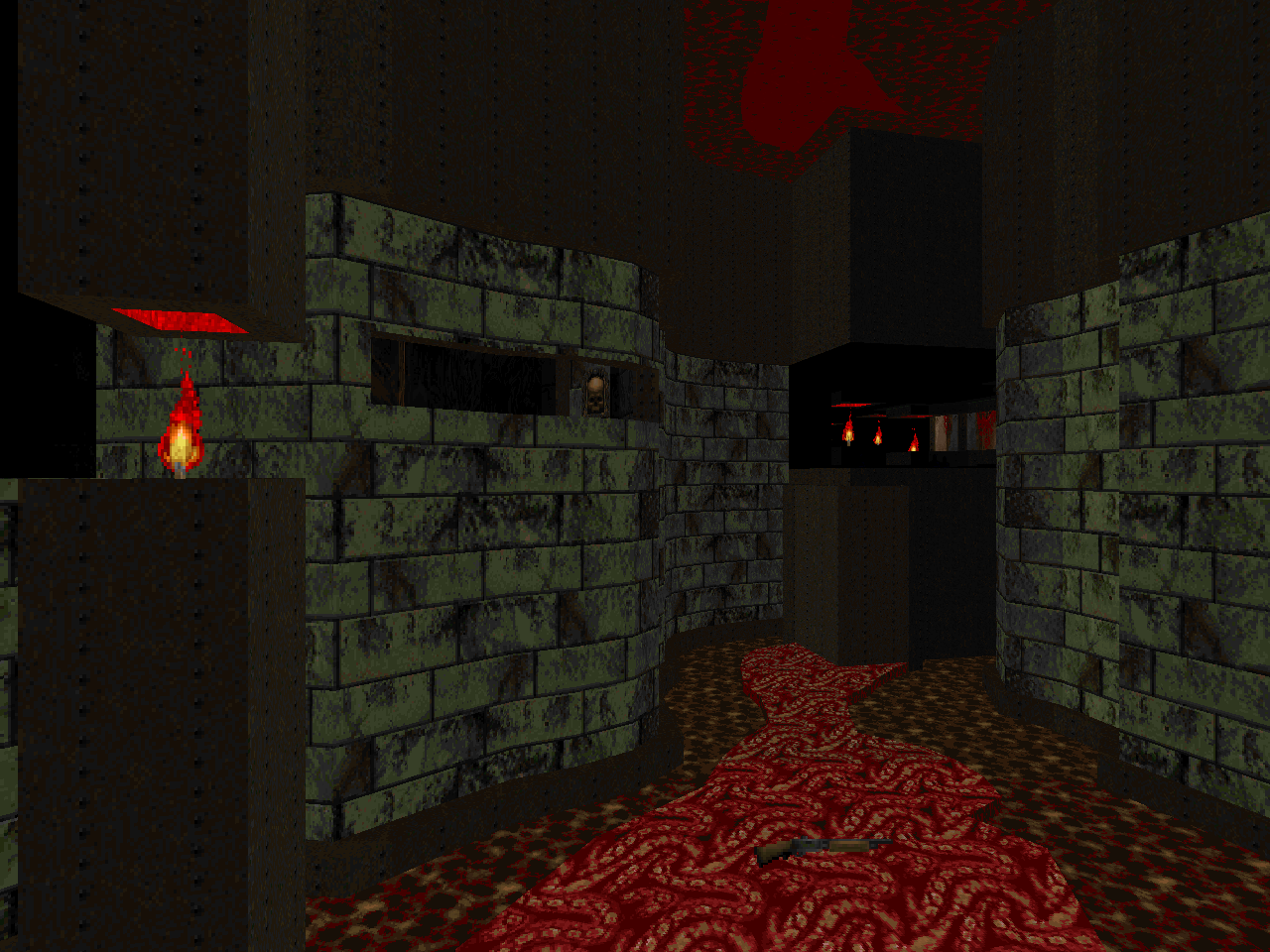




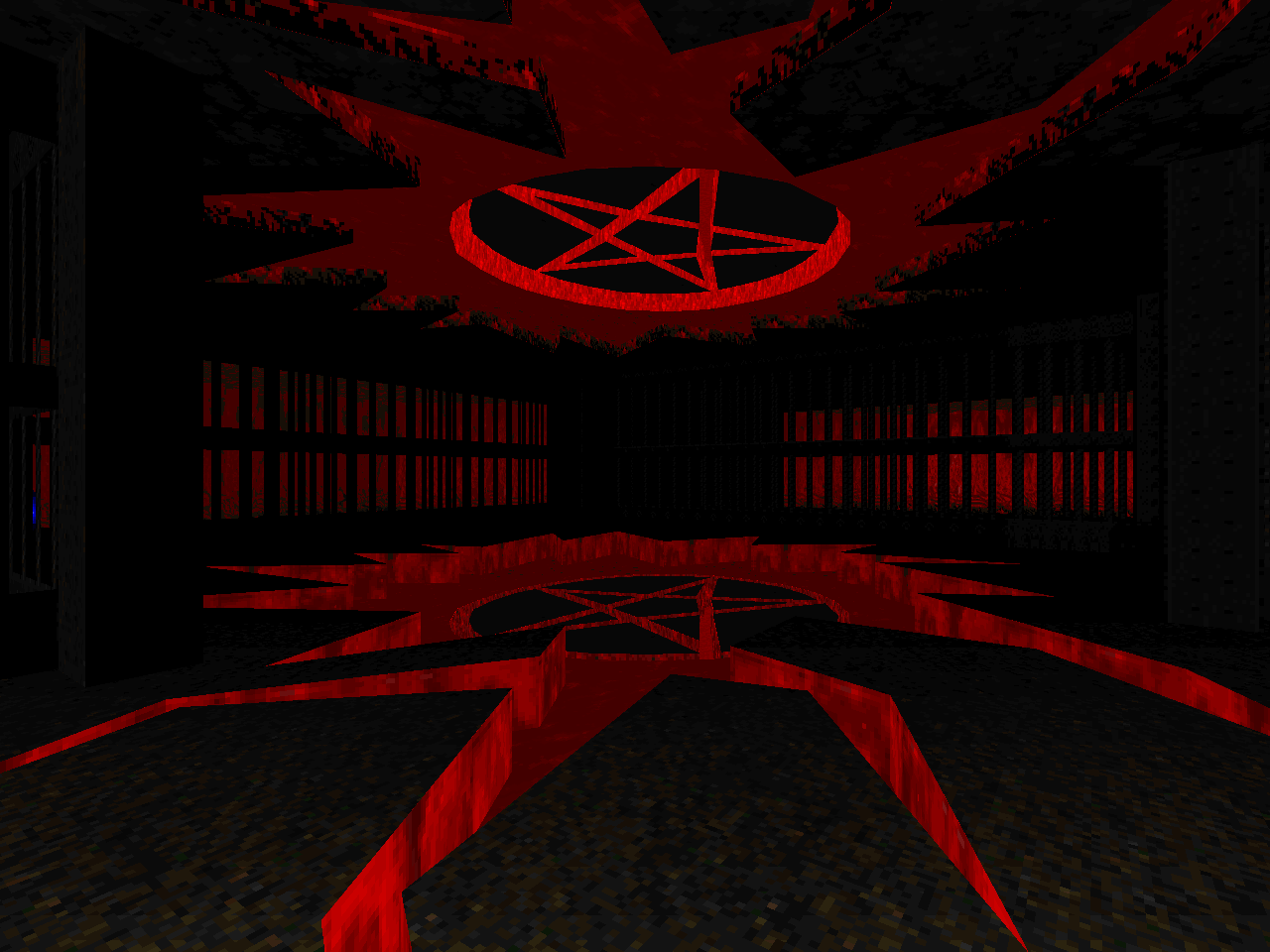
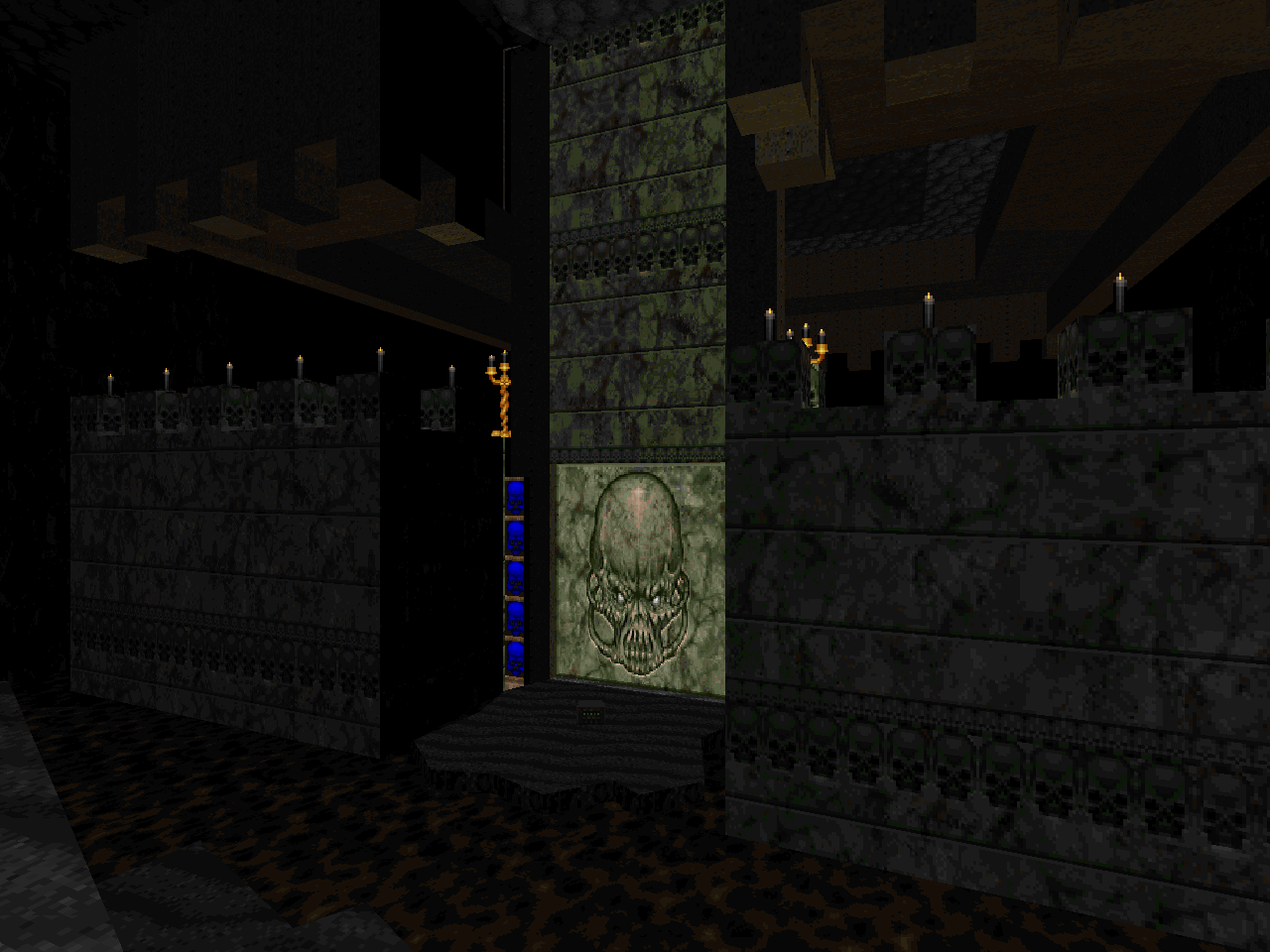

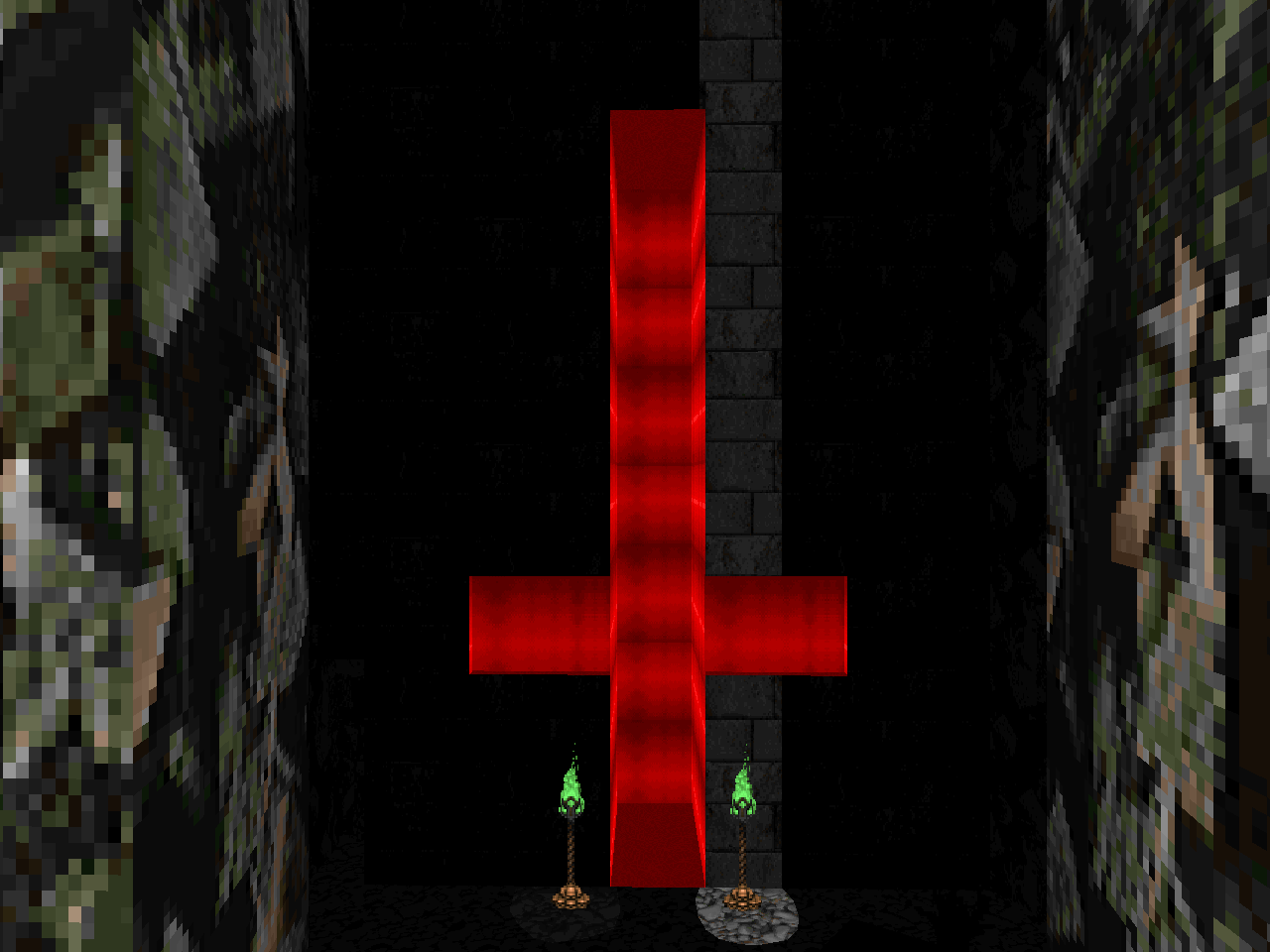

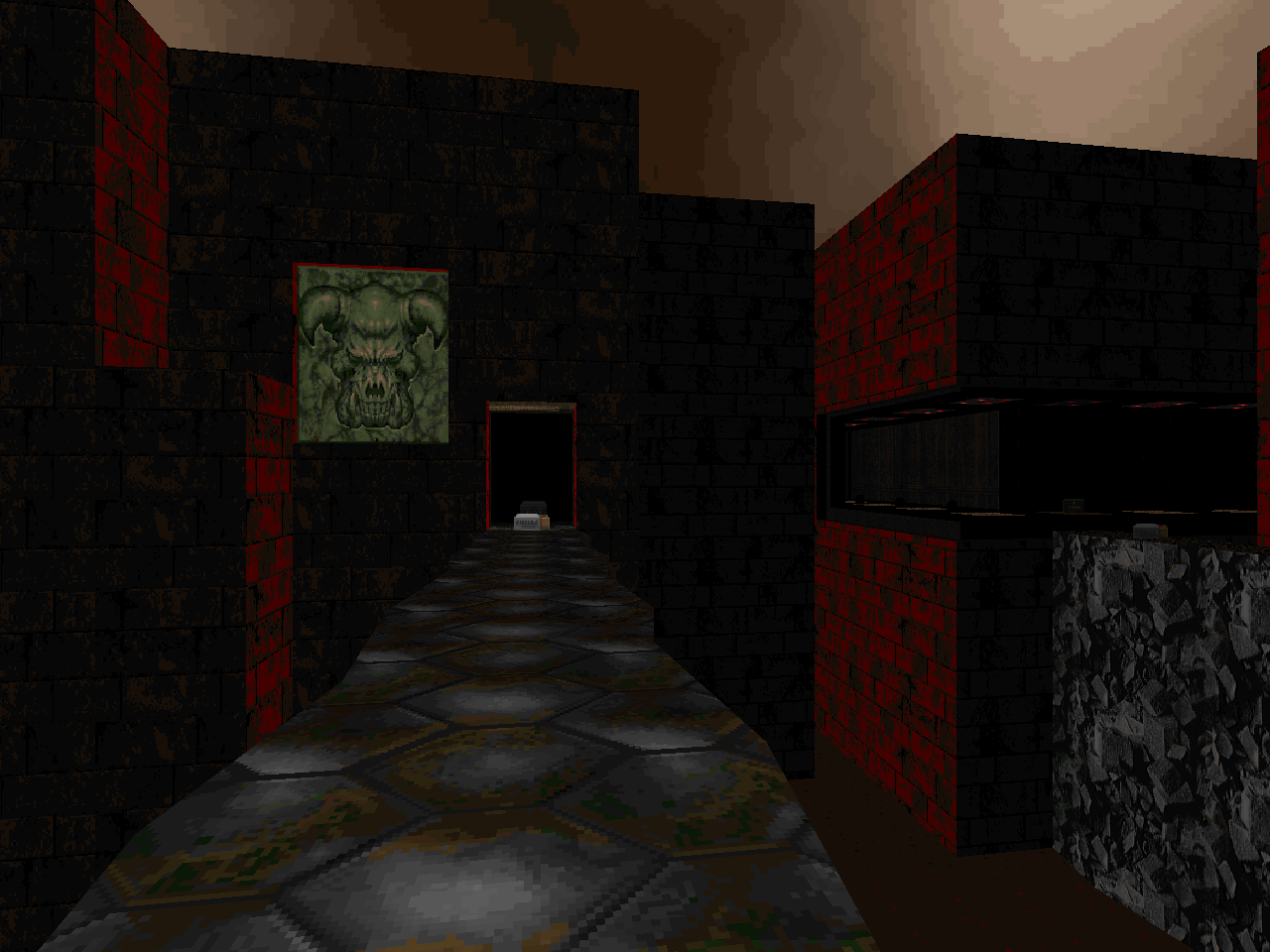
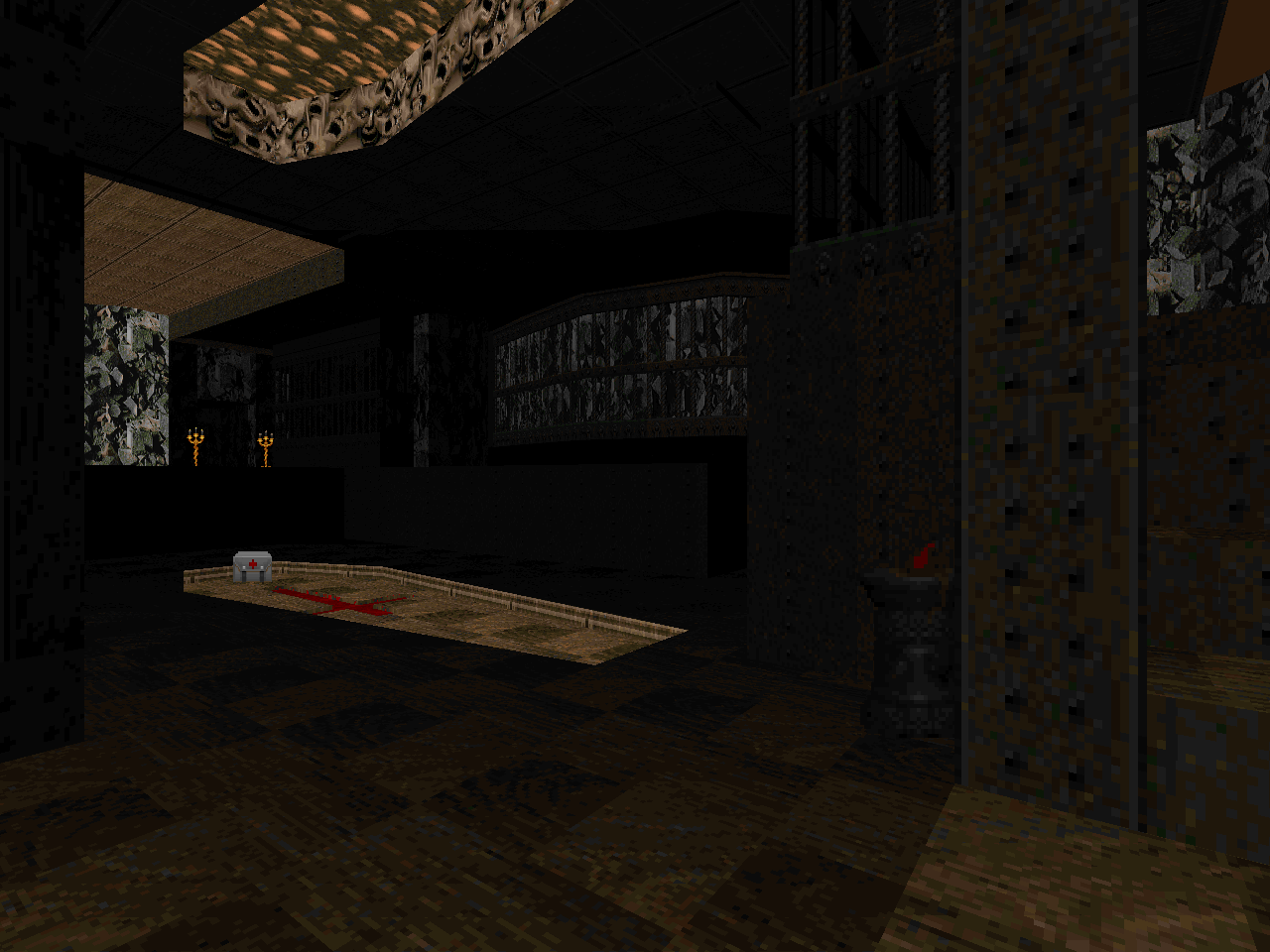
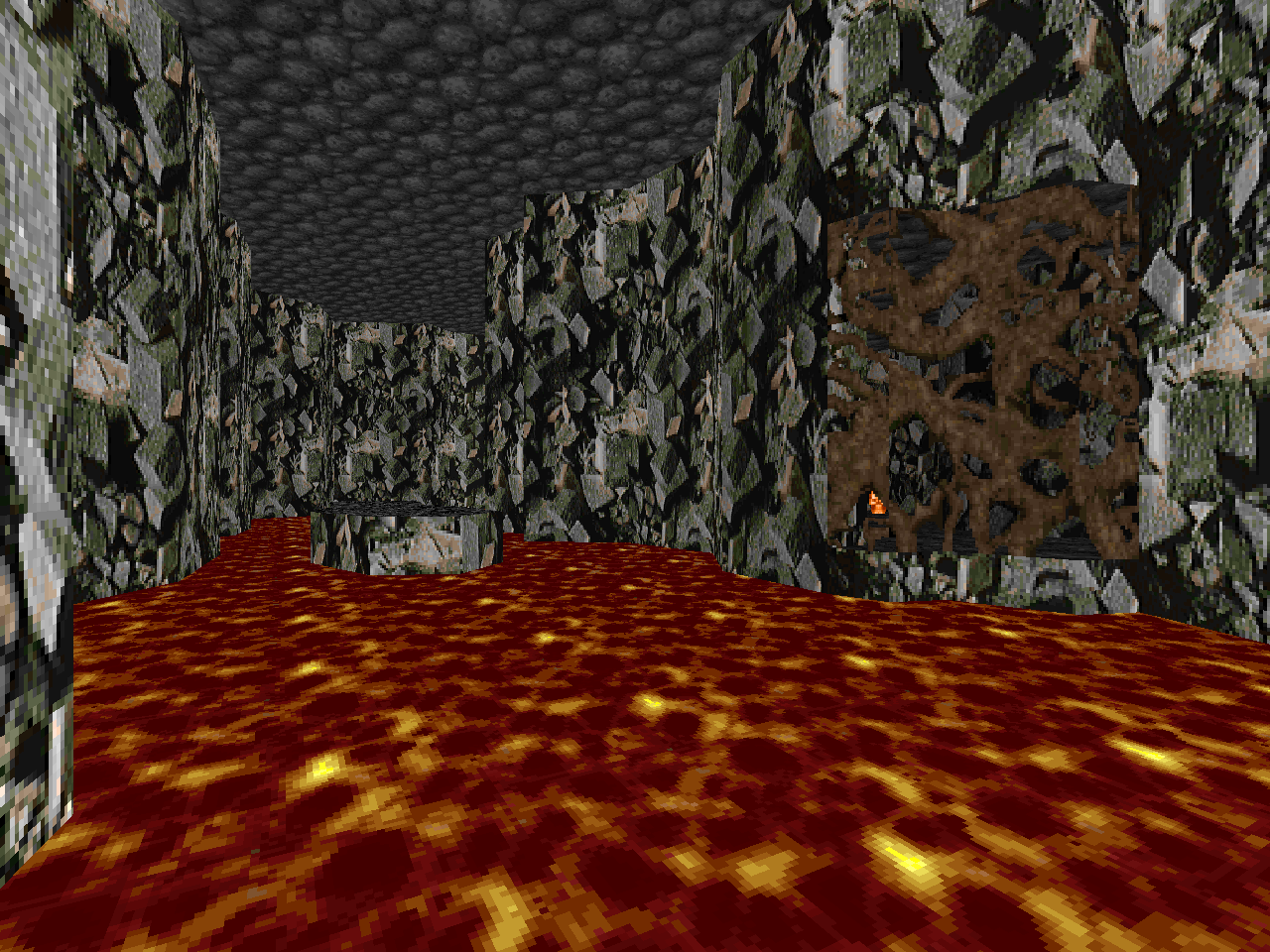
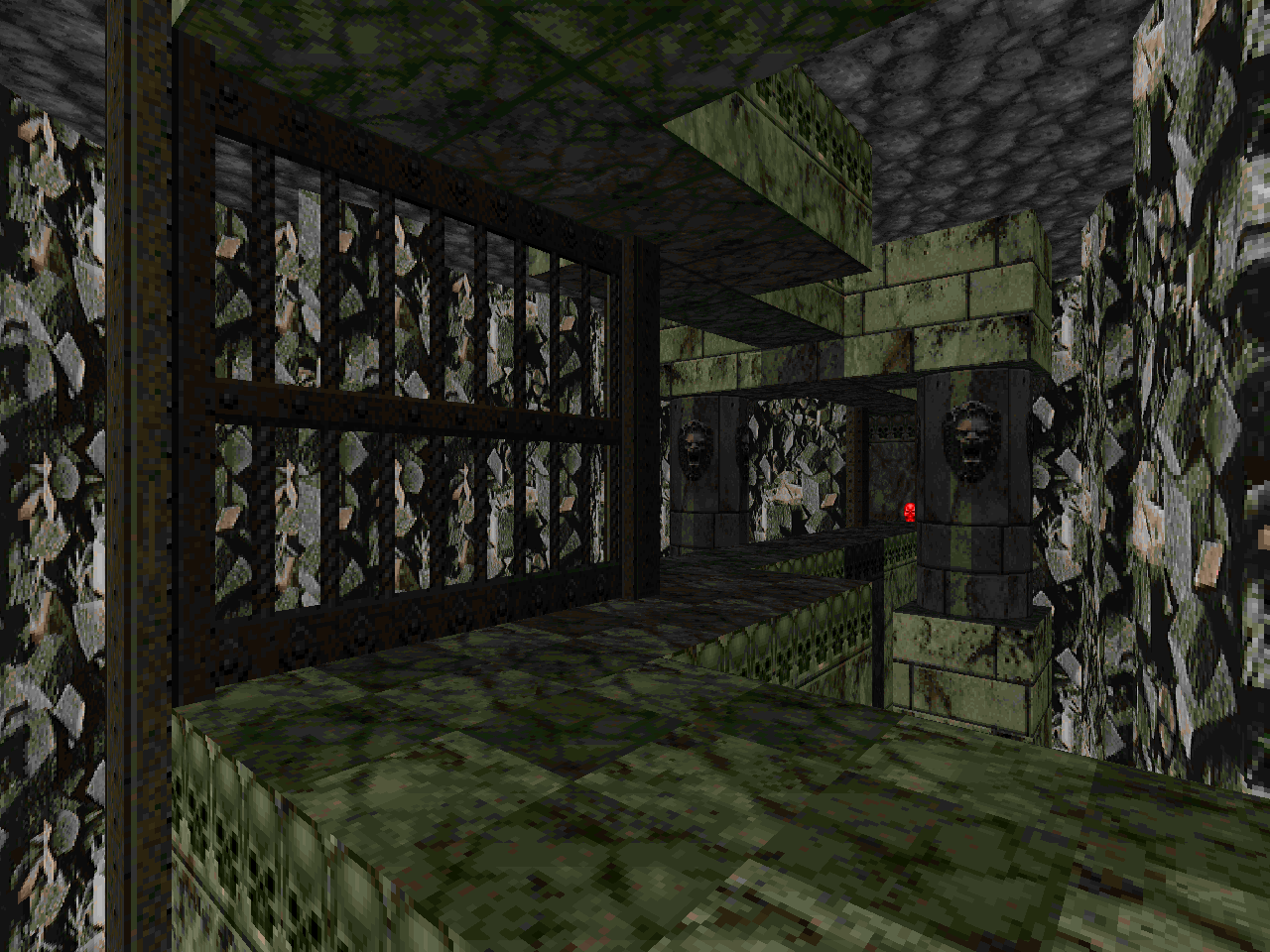
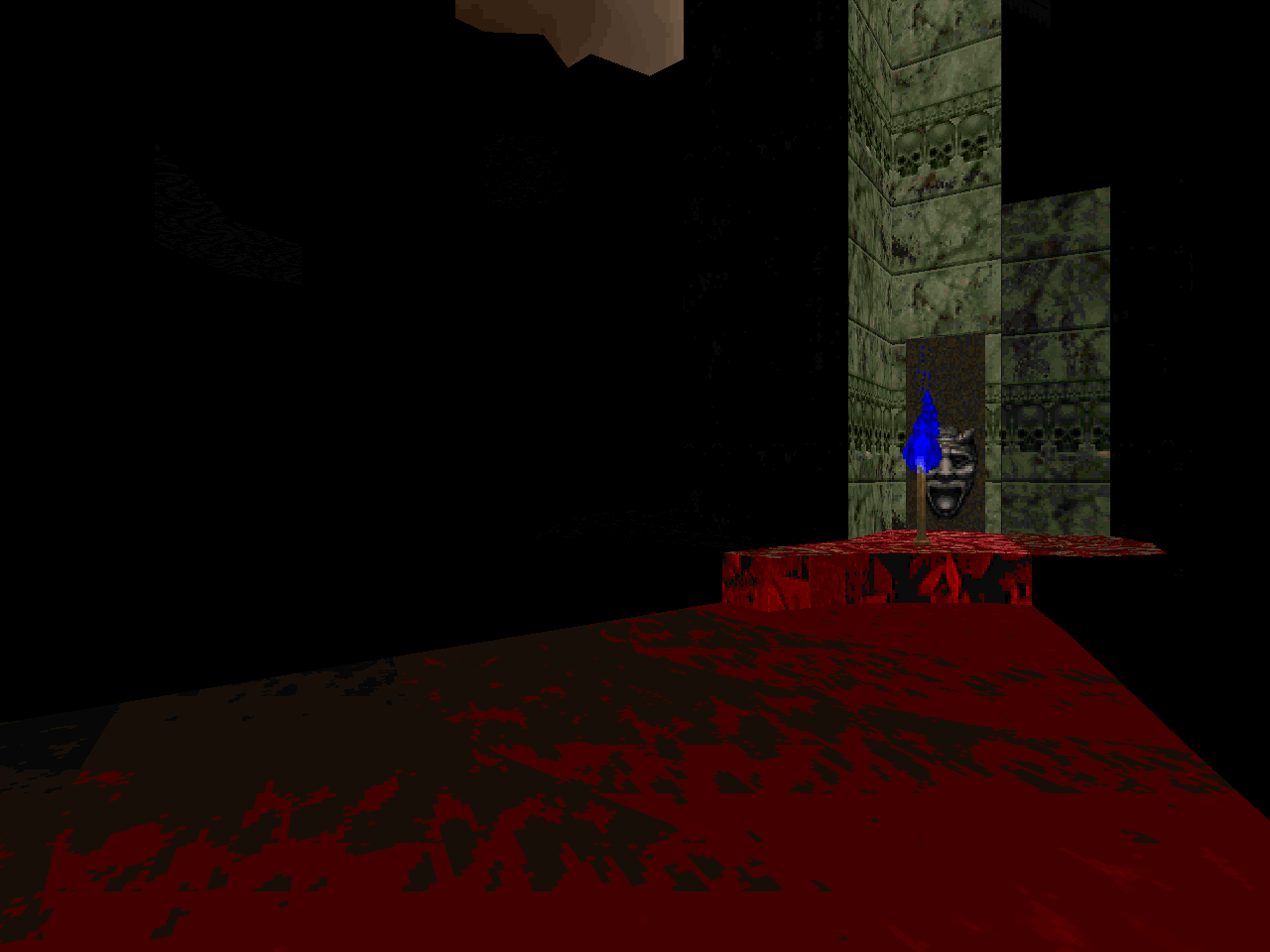

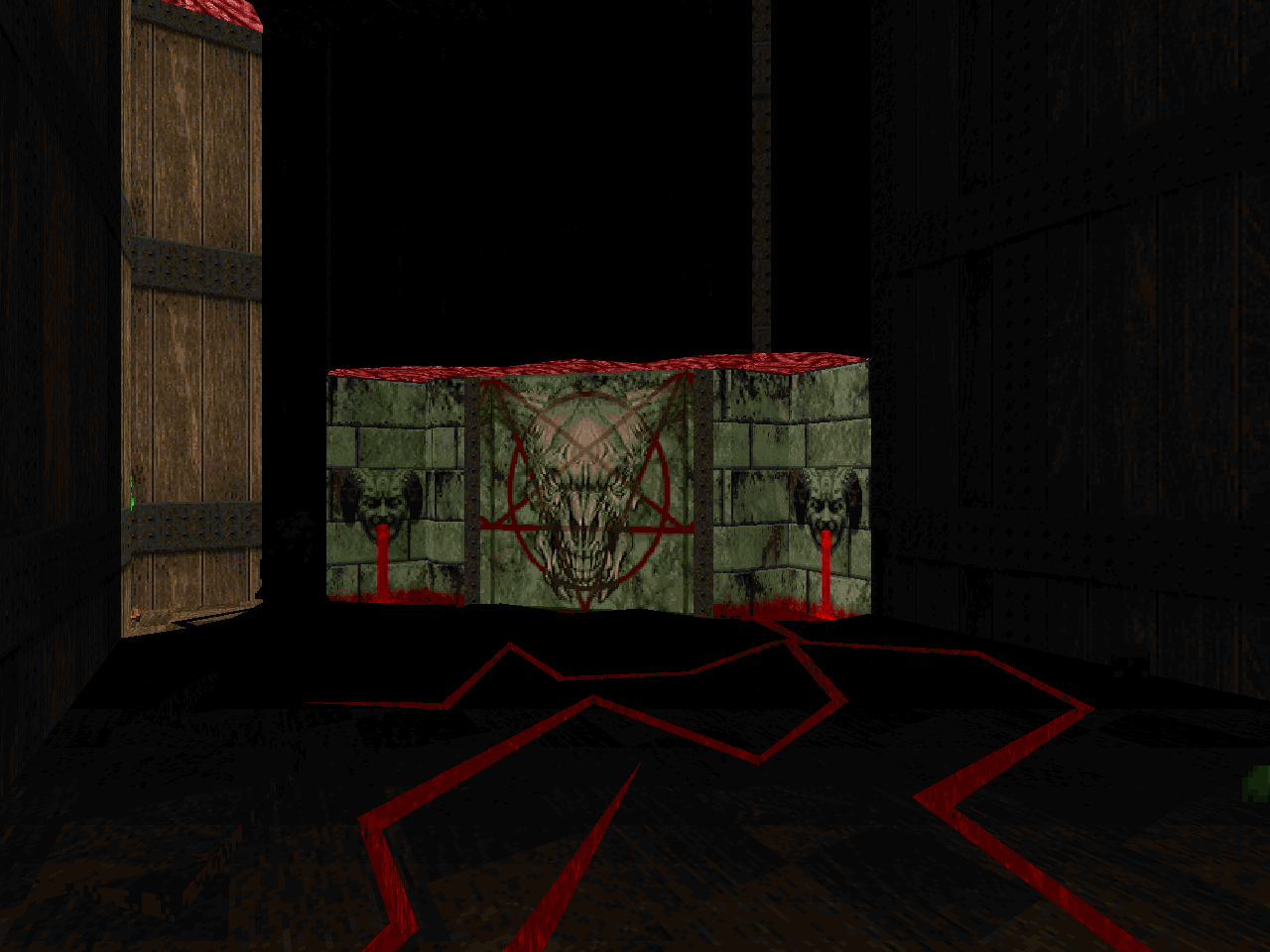

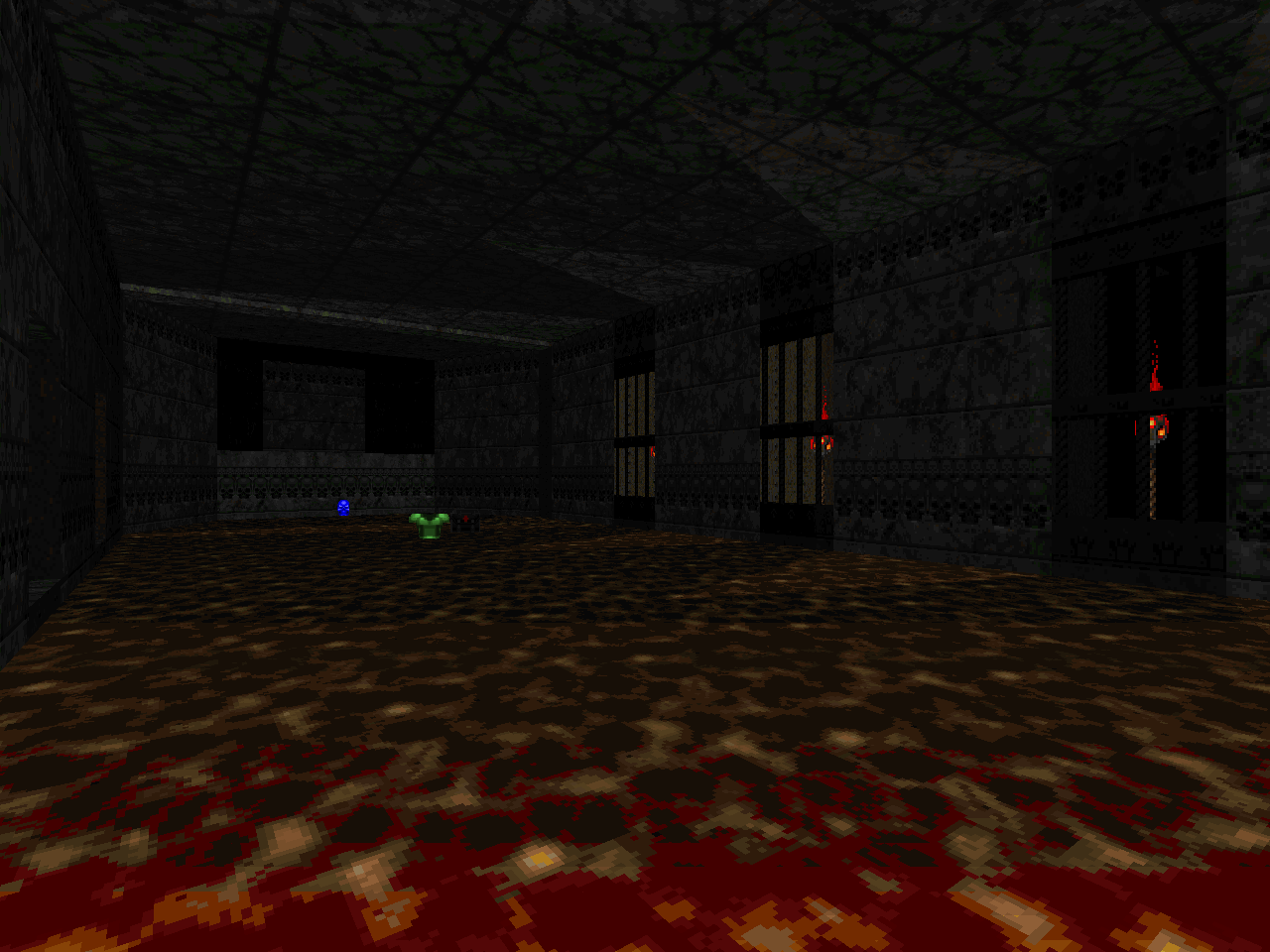
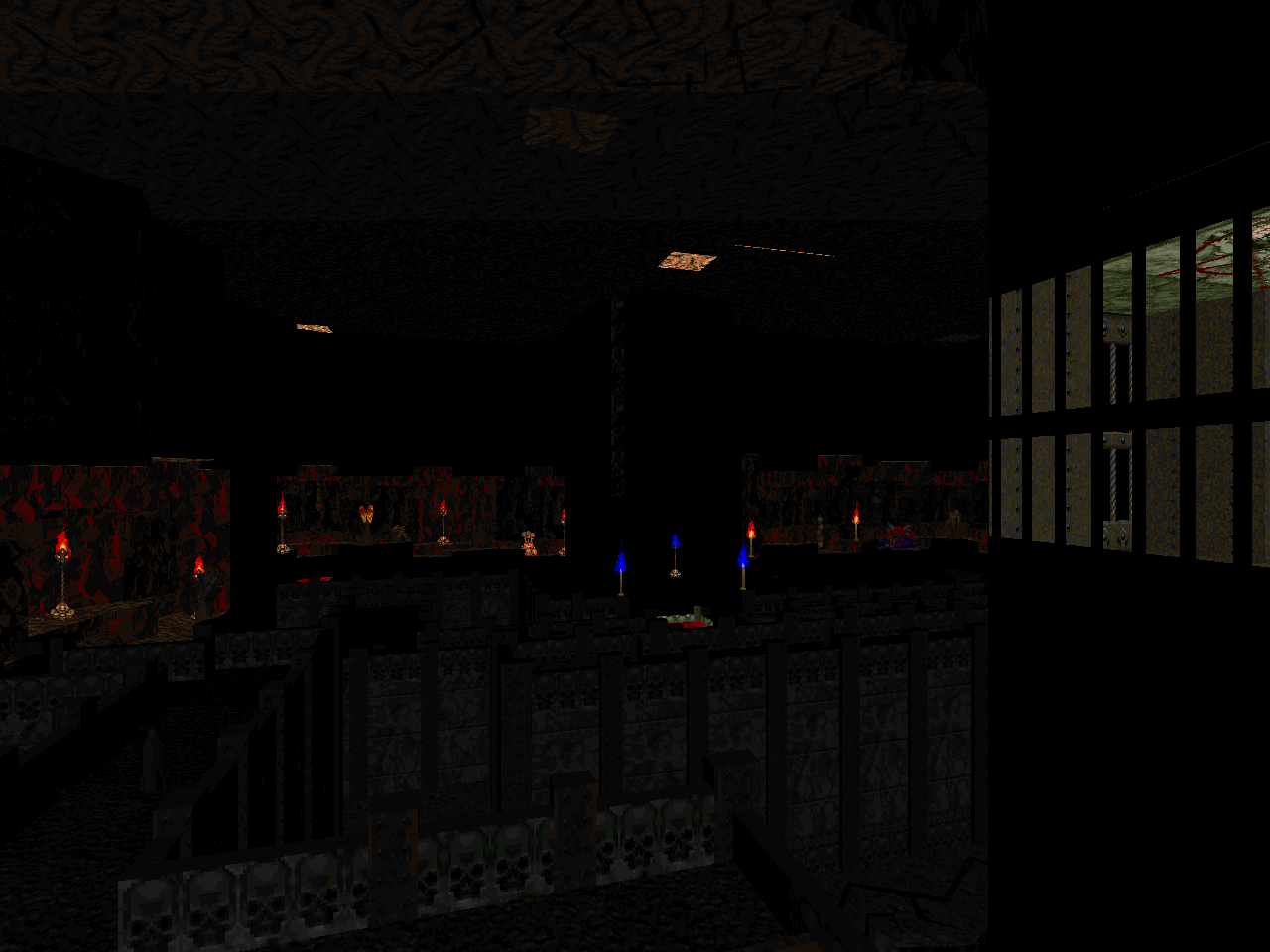
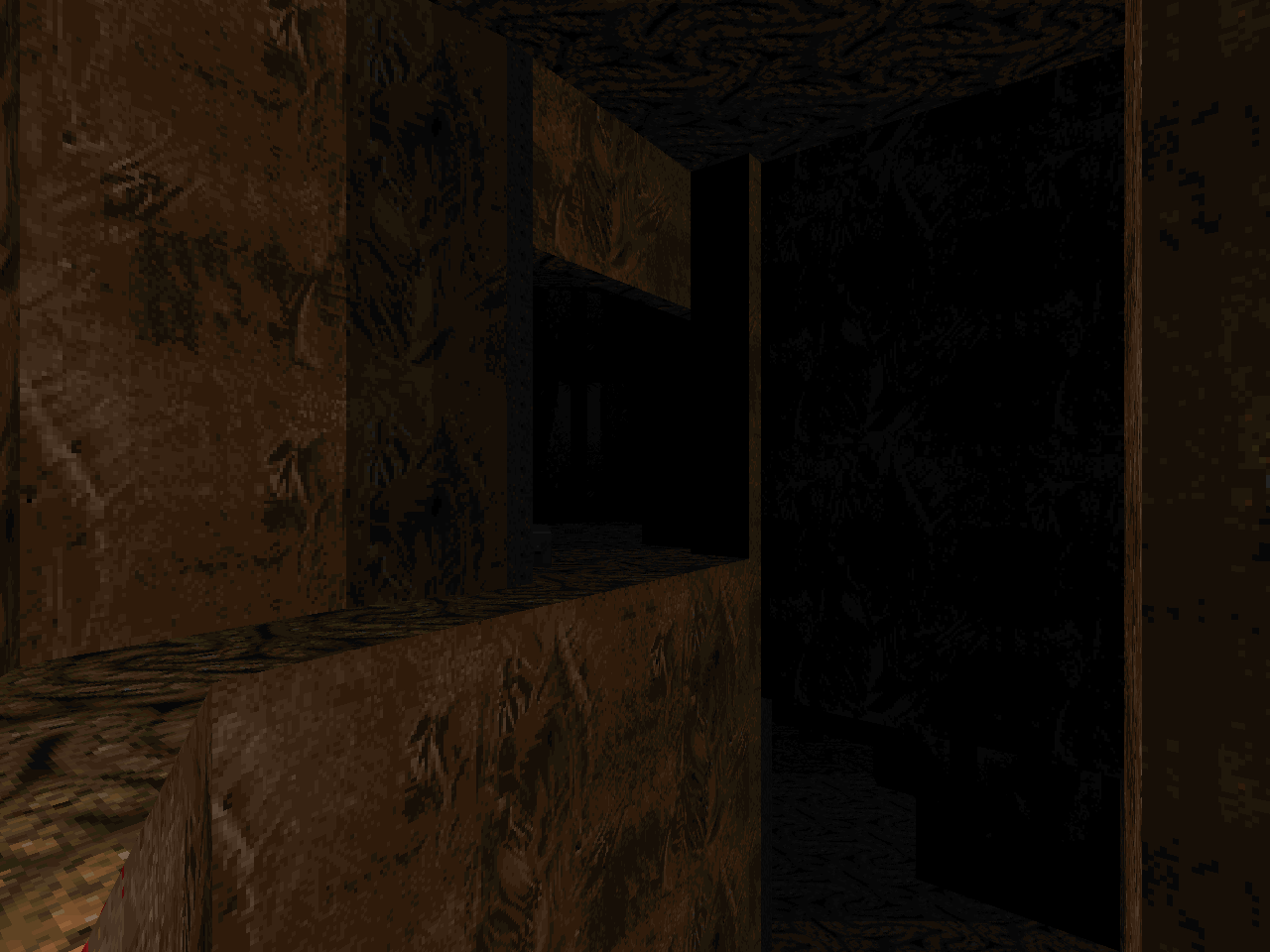

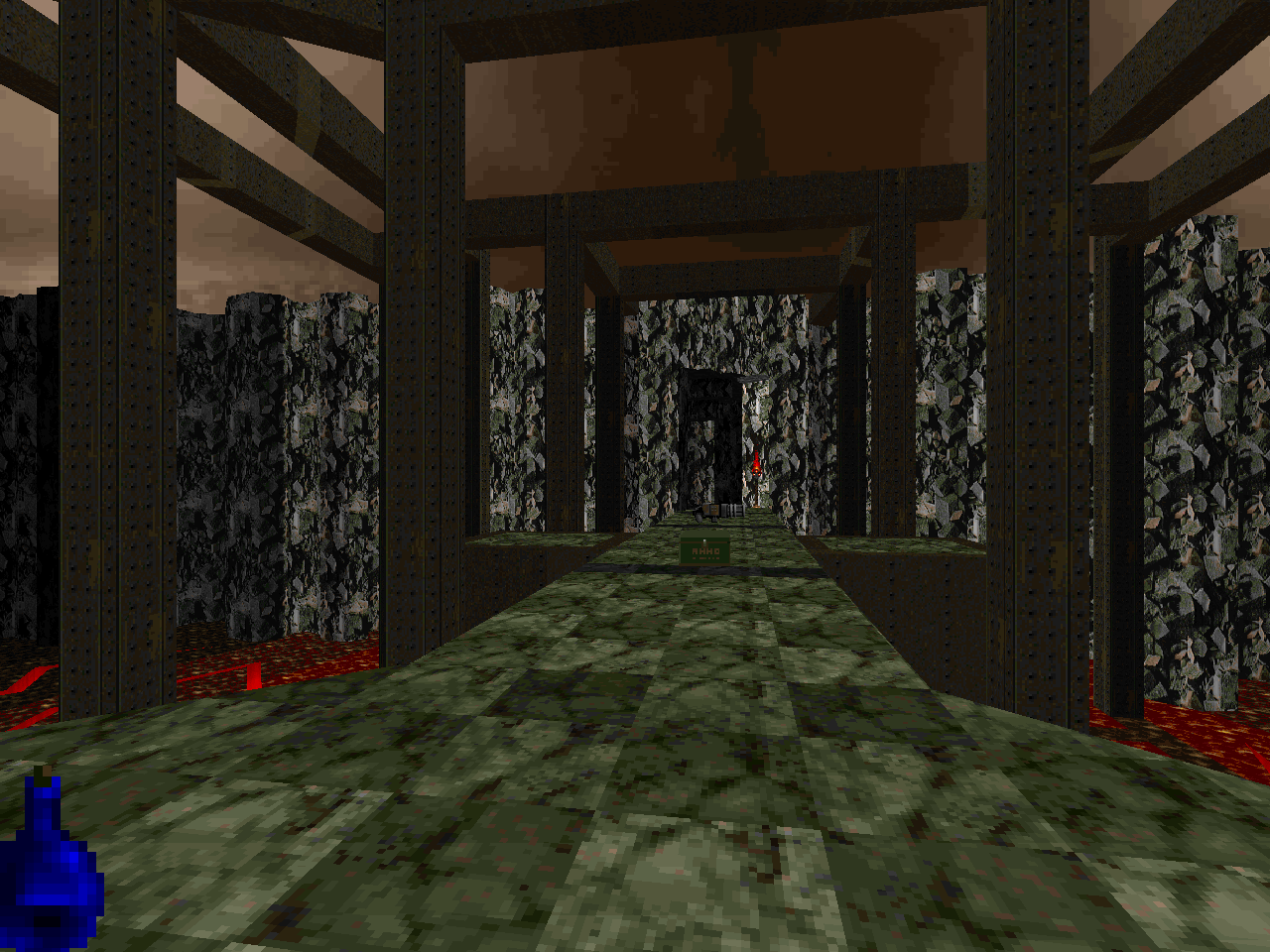
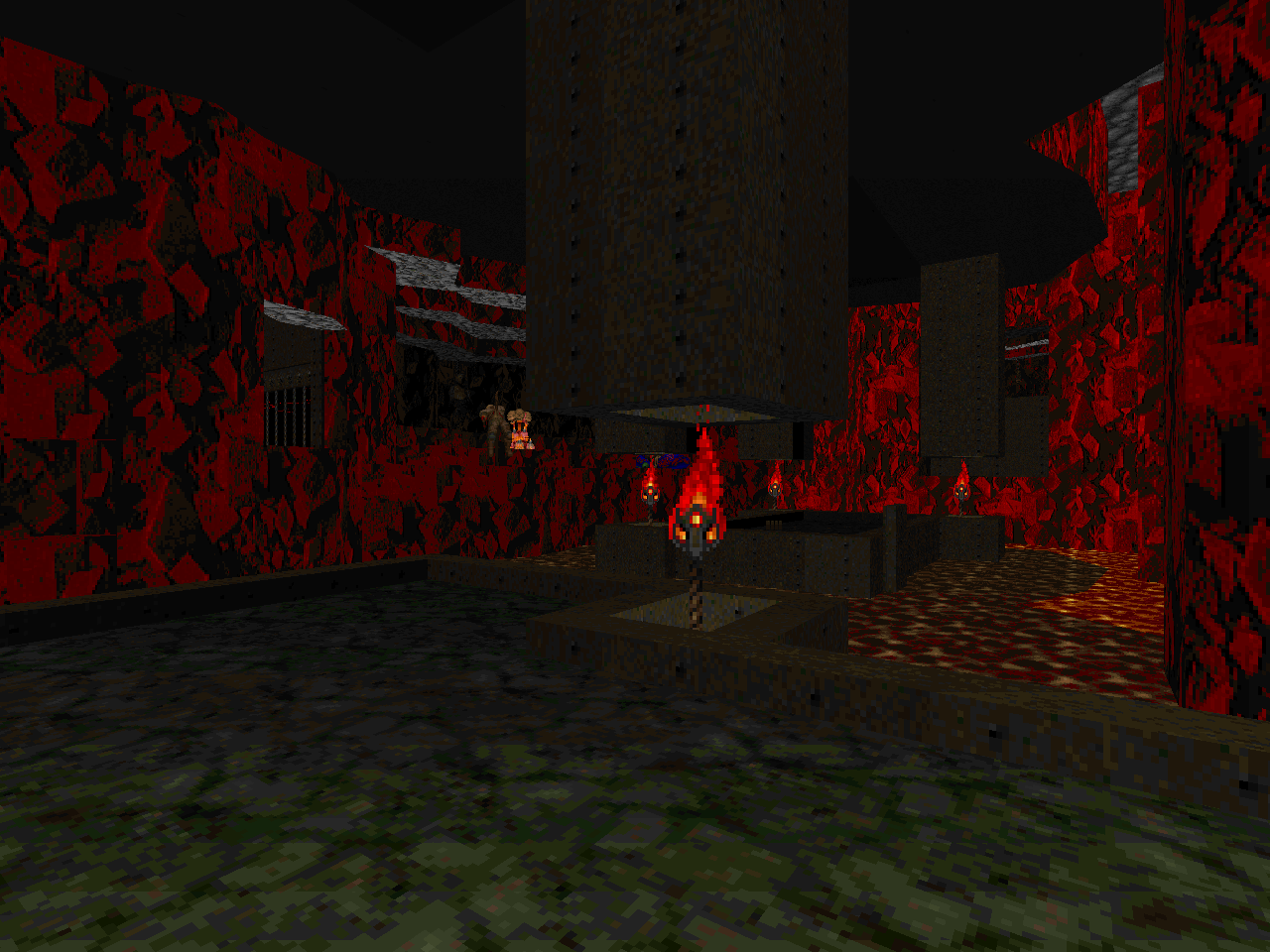
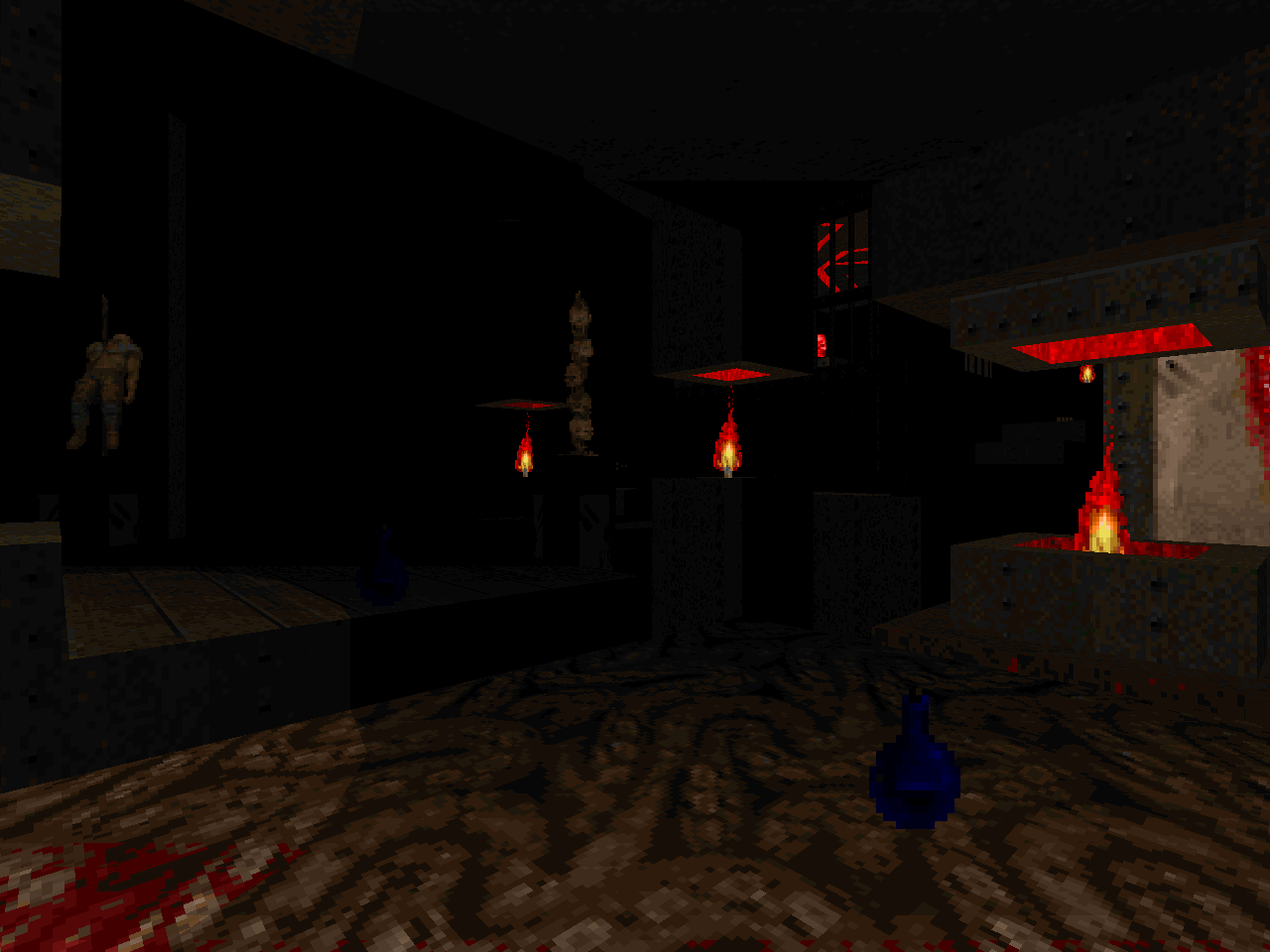
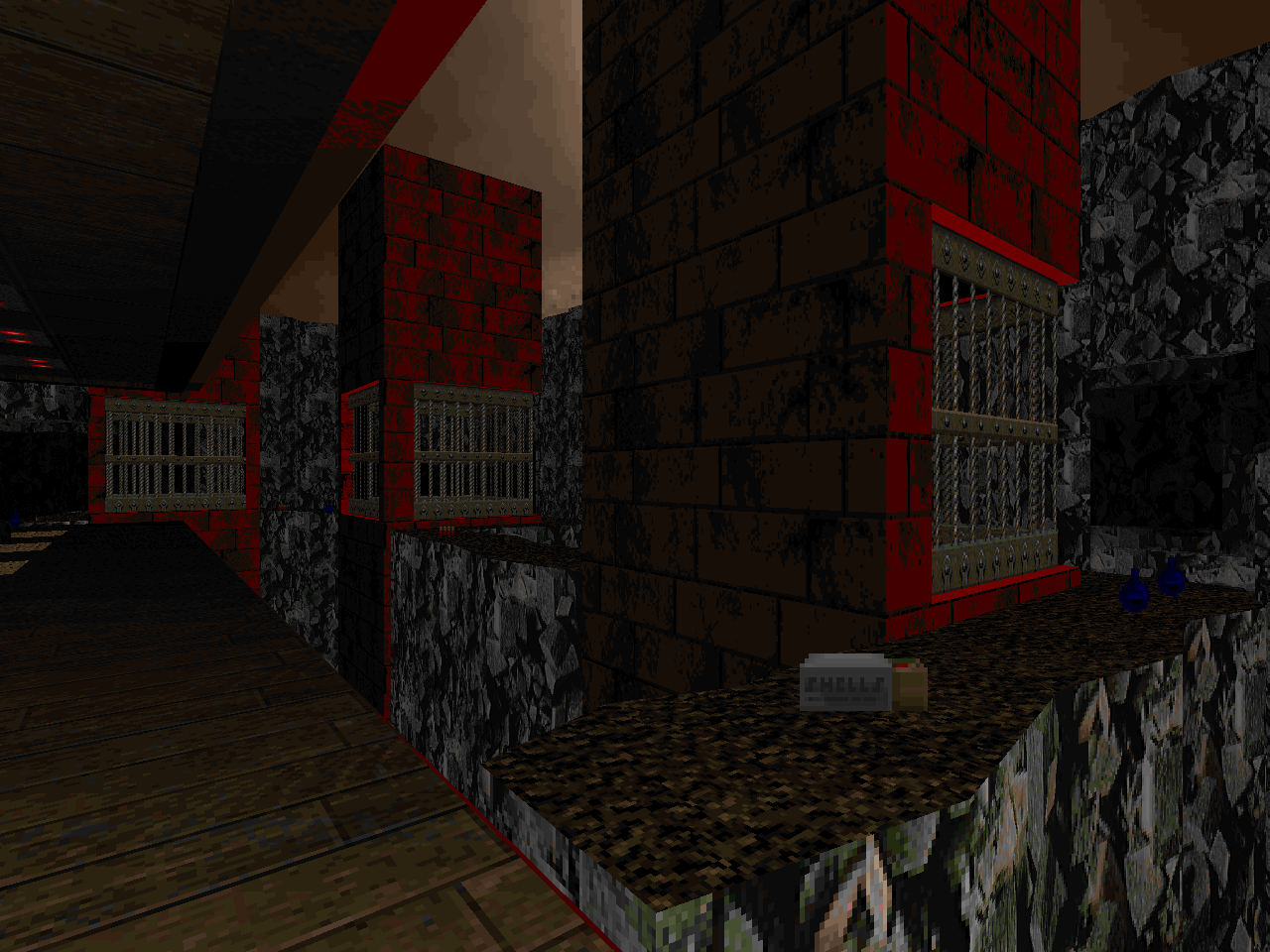
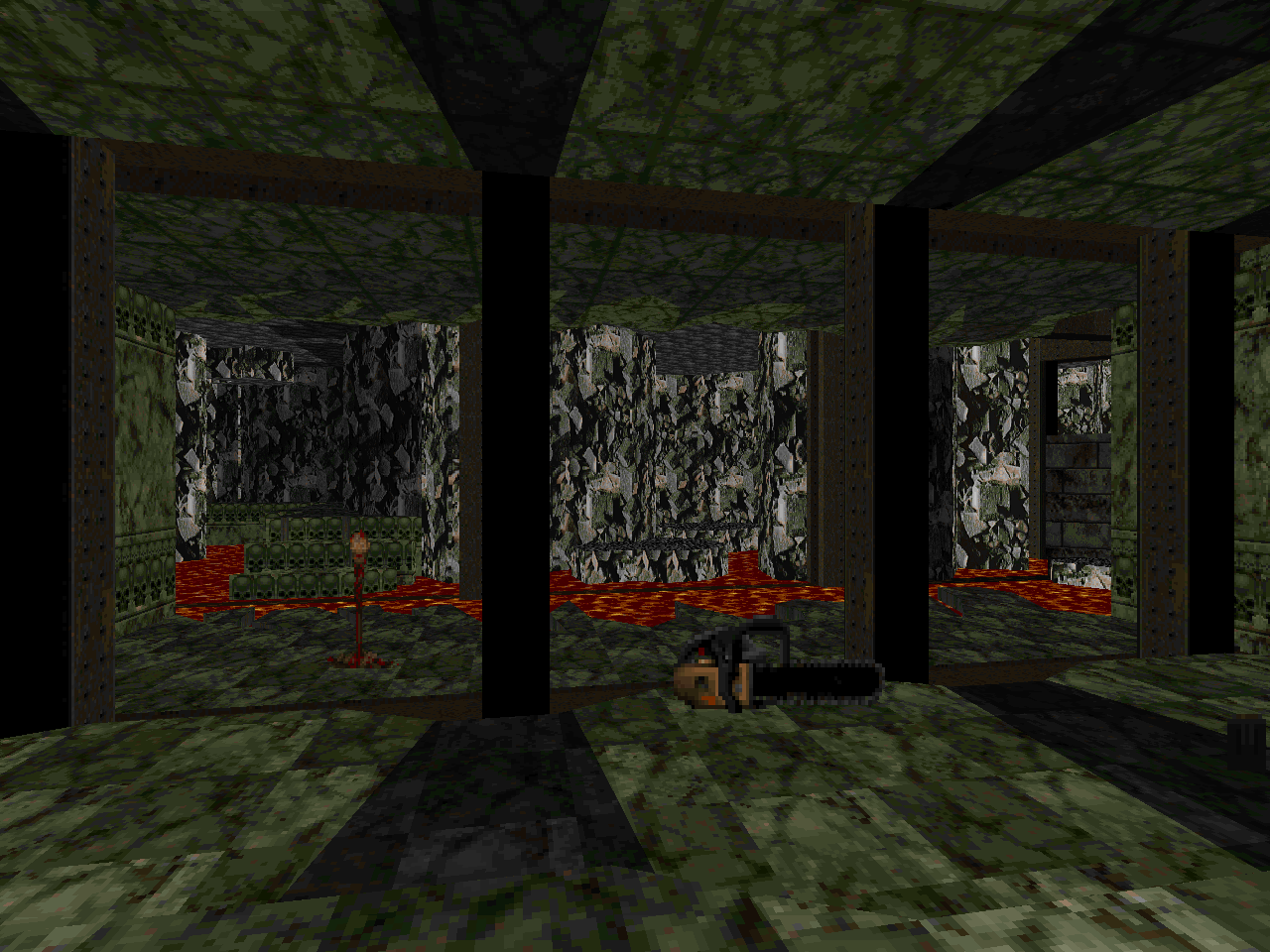
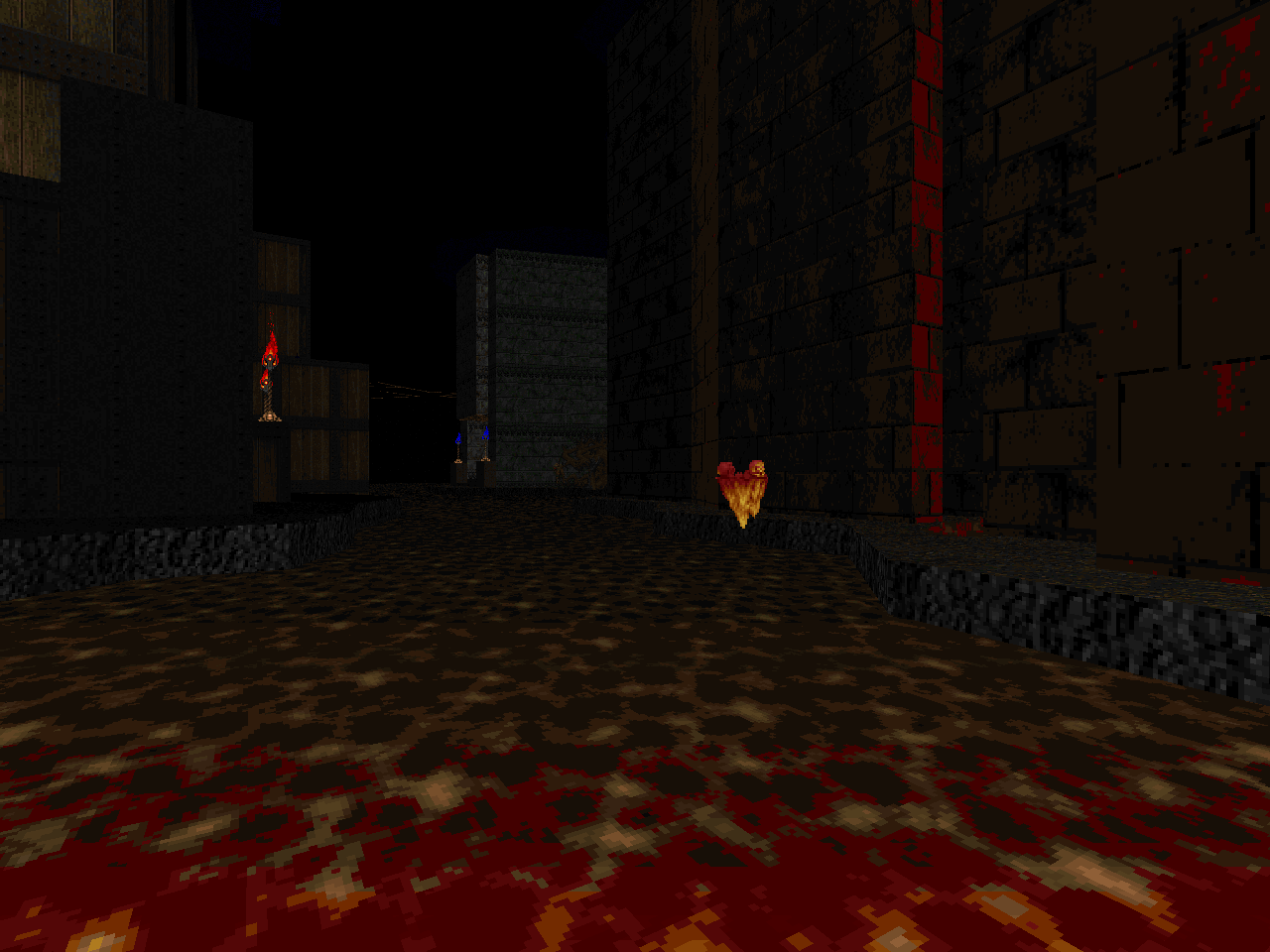
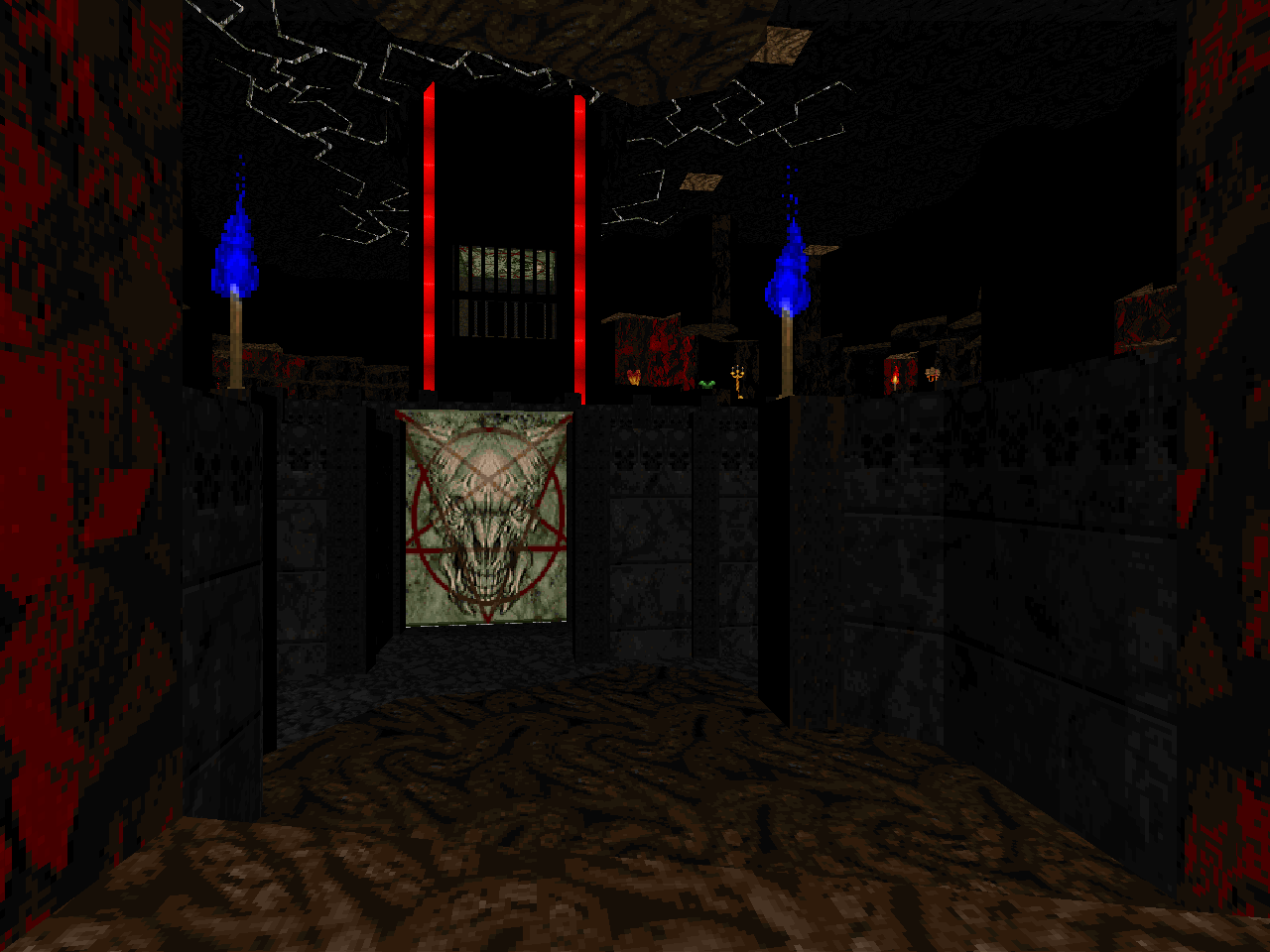



Yes! Awesome read.
ReplyDeleteI like this kind of difficulty scale. Not in overwhelming enemy numbers, but complex enviroment puzzles/obstacles and carefully planned encounters.
Loved Sigil, I hope a DII sequel comes next.
I wouldn't call them carefully planned but the incidental monster placement does feel a bit more thoughtful than the typical Ultimate Doom sprinkling.
DeleteI was looking forward to your piece on Sigil. Terrific read!
ReplyDeleteFor me, the main takeaway from Sigil is that Romero's levels have a strong cinematic flair to them. As you say, each level has an interesting gimmick or twist to it, and you can almost feel Romero's excitement in dropping the player into several exciting and surprising gameplay setpieces. He also understands that Doom isn't just about action, but also atmosphere, and those evil eyes, the cracks in floors and skies, and the crushers (while perhaps a little too tedious) are all about creating something atmospheric and visually striking.
Not that other Doom mods don't strive for the same goals, but in terms of gameplay, some of them are perhaps too much about monster closets and full-on action, and not enough about other types of scenarios. Romero also seems to make his gameplay surprises linger more in the mind. They somehow feel more important in his levels, perhaps because as you suggest, his levels aren't overly long. His work in Sigil feels innovative to me, even if (or perhaps because) he hasn't ever been an active part of the Doom modding community. The "scatterbrained teleport sequence" in level 6 was the standout segment of the episode for me.
I greatly enjoyed Sigil and look forward to more maps from him, and more reviews from you.
I typically think of "cinematic" within the terms of directing the player through action sequences like Caverns of Darkness's "The Pit" (MAP08) but after thinking about it I realize that this is an incredibly limiting viewpoint. SIGIL still certainly shows off an aspect of this due to how overwhelmingly linear its levels are but the atmospheric environments of SIGIL are cinematic in an even more artistic sense.
DeletePlayed this twice, first on UV continuous with Buckethead, then with the Megawad Club on HMP with Jimmy's MIDIs. I gotta say, though Buckethead isn't normally my kind of music, it goes amazingly well with these levels ("The Patrolman" is my absolute favorite.) UV I found to be very tough, but mostly fair. By contrast, I found HMP to be pretty boring with its removal of a bunch of the cyberdemons.
ReplyDeleteAnyway, I loved it, and was impressed with Romero's creativity and polish (even with the need to patch some things with v1.1.) As cool as it would be to see him tackle a DOOM2 project, I'd love to see an Episode 6 from him, maybe with a new texture set (it would be cool to see what he could do with OTEX.) Until then, I need to jerry-rig a custom WAD that combines UDoom, SIGIL, and The Evil Unleashed into a single 6-episode WAD...
I like the idea of the extra moving parts afforded by Doom II monsters but I'd be just as happy to see him tackle any episode given the care exhibited by the design of SIGIL. A different or modified texture scheme would be pretty cool too, of course.
DeleteThis comment has been removed by the author.
ReplyDeletePretty thorough review - props!
ReplyDeleteI have not yet played through the whole set but what I have seen so far was good. Nice to be able to digest some new stuff from the "most notorious Doomer of all time".
I also would love to have him and McGee cook up some DoomII goodness as later served my favorite maps in the sequel and maybe of all time.
id's original maps featured a very minimalist but highly effective style that I really miss.
More Romero maps would be cool. It would also be neat to see what McGee would do since he's put on some twenty-five years. I'd also love to know how Tom Hall and Sandy Petersen would do.
DeleteNice Genesis reference at the bottom!
ReplyDelete